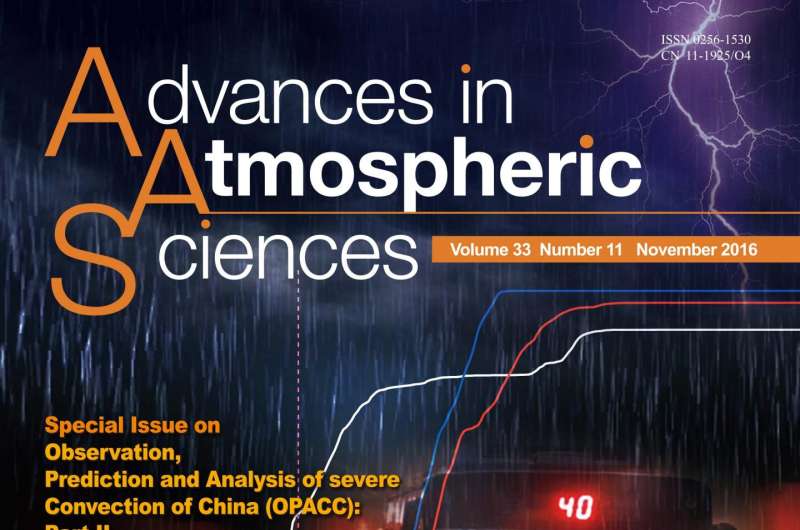Ensemble forecast of a major flooding event in Beijing

An extreme rainfall event occurred in Beijing, China, on 21 July 2012. The average 24-h accumulated rainfall across rain gauge stations in the city was 190 mm, which is the highest in Beijing's recorded history since 1951(Chen et al., 2012). The event resulted in major urban flooding in Beijing, with 79 people losing their lives. However, most operational model forecasts failed to capture the precipitation associated with the convection in the warm sector ahead of the approaching cold front (Zhang et al., 2013), which was a key factor contributing to the total amount of extreme precipitation (Tao and Zheng, 2013). Therefore, the intensity of the rainfall was significantly underpredicted by models.
In a paper recently published in Advances in Atmospheric Sciences, Zhu and Xue (2016) use a convective-permitting ensemble forecast system at 4-km grid spacing, and covering the whole of continental China, to present a detailed evaluation of this extreme rainfall case over the Beijing region on 21 July 2012. The forecast system consisted of 22 members and used multiple physics parameterizations. The relative roles of initial conditions and physics perturbations in the ensemble for this case are also discussed in the paper. The predicted maximum rainfall amount in the probability matched ensemble mean was 415 mm d?1. The predicted high-probability heavy rain region was located in southwest Beijing, as was observed.
Some members of the ensemble forecasting system captured the extreme prediction reasonably well (certainly better than the operational forecasts available at the time), including the timing and location of extreme precipitation. The authors then used those data to analyze why some members were able to predict the convection in the warm sector while others could not. Comparison between good and bad members showed that orographic lift of very moist low-level flows with a significant southeasterly component played an important role in producing the initial convection. They also found that the extreme rainfall was more sensitive to the mesoscale environmental conditions than to the model physics.
Compared to single deterministic forecasts, ensemble forecasts can better capture extreme events and, at the same time, provide information on the reliability or uncertainty of the forecasts. "The ensemble mean forecast is often more accurate than individual forecasts," says Ming Xue, a professor of meteorology and the director of the Center for Analysis and Predictions of Storms at the University of Oklahoma. "Rapidly updated ensemble probabilistic prediction at convection-resolving resolutions is the future for the forecasting and warning of severe convective weather, and the effective assimilation of very high-resolution weather observations into the forecasting models is also essential."
More information: Kefeng Zhu et al, Evaluation of WRF-based convection-permitting multi-physics ensemble forecasts over China for an extreme rainfall event on 21 July 2012 in Beijing, Advances in Atmospheric Sciences (2016). DOI: 10.1007/s00376-016-6202-z
Provided by Institute of Atmospheric Physics, Chinese Academy of Sciences



















